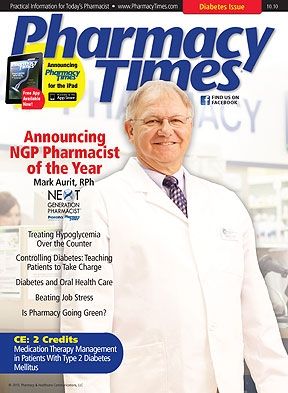Case Studies: Test Your Skills
Case One
AJ is a 56-year-old man who receives care from the primary care clinic at a university hospital. Today, AJ presents to his visit with complaints of worsening nocturia, hesitancy, and a weak urinary stream. Although AJ has had similar complaints over the past 6 months, his symptoms have worsened recently and are now interfering with his daily living, especially because he has been waking up several times each night to go to the bathroom. The medical resident taking care of AJ diagnoses him with benign prostatic hyperplasia (BPH). He writes a prescription for Flomax 0.4 mg and instructs AJ to take 1 tablet daily. The medical student working on the team turns to the resident and asks, “How did you choose between Flomax and a drug like Proscar?” How should the resident respond?
Case Two
AC is a 57-year-old man who has recently begun dutasteride therapy for the treatment of BPH. As he picks up his refill at the pharmacy he states, “I have a question regarding my medication. My buddy is taking dutasteride as well, but his doctor told him not to give blood while taking this medication. Why is this?” What is the safety concern about giving blood while taking dutasteride?
ANSWERS
Case 1: The alpha-1 antagonists, including tamsulosin (Flomax), alfuzosin (Uroxatral), doxazosin (Cardura), silodosin (Rapaflo), and terazosin (Hytrin), are approved for the symptomatic treatment of BPH. Alpha-1 antagonists lead to relaxation of smooth muscle found in the prostatic urethra, bladder neck, and prostate capsule, leading to relief of lower urinary tract symptoms (LUTS). These agents do not affect the size of the prostate. Finasteride (Proscar) and dutasteride (Avodart) are 5-alpha reductase inhibitors that also have FDA approval for the treatment of symptoms due to BPH. These agents work by inhibiting the conversion of testosterone to dihydrotestosterone within androgensensitive tissue such as the prostate, leading to a reduction in prostate size and improvement in LUTS. Therefore, if a patient diagnosed with BPH also presents with evidence of prostate enlargement, such as an elevated prostate-specific antigen level, guidelines suggest selection of a 5-alpha reductase inhibitor over an alpha-1 antagonist. If there is no evidence of prostate enlargement, initiating therapy with an alpha-1 antagonist is appropriate. Treatment initiation is also dependent on the severity of LUTS and the degree to which they interfere with activities of daily living (ADLs), as watchful waiting is an option if the LUTS are mild or moderate to severe but do not interfere with ADLs.
Case 2: Dutasteride is used to treat symptomatic BPH due to an enlarged prostate. It works by competitive inhibition of 5-alpha reductase, blocking the conversion of testosterone to dihydrotestosterone (DHT). DHT is a hormone necessary for normal development of male genitalia. Evidence of this has been shown in animal studies where dutasteride inhibited the development of male fetus external genitalia, making it a pregnancy category X. Therefore, pregnant women, or women who may become pregnant, should not handle dutasteride because of development risks to the fetus. Due to dutasteride’s long half-life, serum concentrations of the drug may remain detectable for up to 4 to 6 months after discontinuation of therapy. For this reason, men wanting to donate blood should wait a minimum of 6 months after cessation of dutasteride therapy to avoid exposure to female blood recipients who may be pregnant.
function showAnswer() {document.getElementById("answer").style.display = 'block';document.getElementById("link").style.display = 'none';}
Dr. Coleman is an associate professor of pharmacy practice and director of the pharmacoeconomics and outcomes studies group at the University of Connecticut School of Pharmacy. Dr. Sobieraj is a senior scientist at the University of Connecticut/Hartford Hospital Evidence-Based Practice Center. Ms. Barone is a PharmD Candidate at the University of Connecticut School of Pharmacy.

